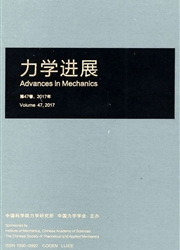

 中文摘要:
中文摘要:
本文主要研究框架结构悬链线效应方面的新进展,并着重对钢筋混凝土框架结构与钢框架结构悬链线效应的区别,以及强震作用下框架结构连续倒塌过程中的悬链线效应进行了探讨.本文首先介绍悬链线效应的概念,即处于结构整体中的水平构件在失去抗弯能力后,通过轴力和很大挠度形成的力矩来抵抗外载荷产生的弯矩的现象.在火灾、强震等作用下,框架结构局部梁构件会依次进入弹性状态、弹塑性状态,进而屈服产生塑性铰,成为瞬变机构,此时梁构件的挠度会迅速增大,形成悬链线效应,当塑性铰失效时,则会产生机械铰,当悬索拉力超过极限承载能力时,机械铰断裂.其次通过算例来研究两端铰接约束梁在小变形状态下轴力与挠度形成的力矩与弯曲抵抗力矩的比值随载荷、跨度以及截面高宽比变化的关系.接着对国内外学者的框架结构悬链线效应研究进行系统的分析和总结,重点研究钢筋混凝土梁构件由压拱效应向悬链线效应的转化过程.最后对框架结构悬链线效应研究需要进一步开展的工作进行探讨和展望,通过利用悬链线效应的强度储备来增强结构的潜在强度和抗倒塌能力.
 英文摘要:
英文摘要:
Latest progress in the study of catenary action in frame structures is reviewed. Firstly, the concept of catenary action is introduced, that is, while horizontal elements in structural system had lost their flexural capacity, the moment generated by external loads could be sustained through torque formed by axial force and a large deflection. Under strong ground motions, a frame would experience elastic deformation, cracking, steel yielding, plastic rotation, crushing and even the fail of components. In some circumstances, the deflection of failed beams generally develops substantially, leading to the transition from flexural resisting system to combined catenary and flexural system. Plastic hinges would turn into mechanical hinges if their limit rotation capacities are exceeded. With increasing tensile forces, the mechanical hinges could fail due to rupture or pull-out of longitudinal reinforcing bars from joint zone. Secondly, an example is presented to study the relationship of the ratio between the torque formed by axial force and a large deflection and the bending resistance moment of restrained beam hinged at both ends in the small deformation state, which varies with load, span and aspect ratio of cross section. Thirdly, the overview of research laid on the process of arch action transformed into are suggested and discussed. on catenary action is analyzed and summarized, with focus catenary action of RC beams. Finally, further developments
 同期刊论文项目
同期刊论文项目
 同项目期刊论文
同项目期刊论文
 期刊信息
期刊信息
